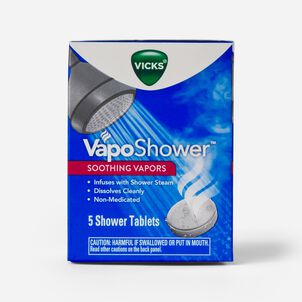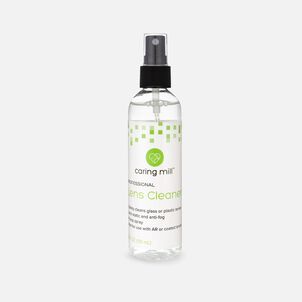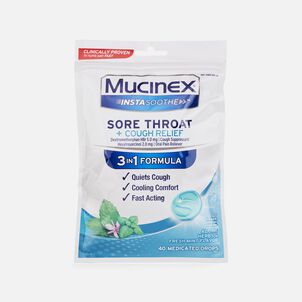 | SHOP NOW
| SHOP NOWYour health savings account (HSA) is a tax-free safe space, where you can secure funds without fear of heavy tax hits when it's time to use the money for qualified medical expenses. After all, most couples are going to need $351,000 or more at retirement just for medical costs.
And iIf you're healthy, your HSA is an even better resource, letting you save contributions from your employer without having to claim them as taxable income. Plus, any contributions you make on your own are tax-deductible, so you can enjoy money that grows with you without confusion during tax season.

A quick refresher on HSA basics
In case you're new to all this, an HSA allows you to pay for current healthcare expenses and save for those in the future. Its first advantage is that contributions are tax-deductible, or if they're made through a payroll deduction, they're pre-tax. Second, any interest earned or gains on investment are tax-free. Third, account owners may make tax-free withdrawals for qualified medical expenses. That's a triple tax benefit!
HSAs are available with most high-deductible health plans (HDHPs). The primary objective of a health savings account is to give individuals an additional source to fund health costs that cannot be covered due to limitations imposed by their plan.
These accounts are usually compared to flexible spending accounts (FSAs), but there are big differences between these types of plans. One of the unique things about HSAs that's not incorporated into FSAs is the ability to roll over unused funds on a yearly basis — so there’s no deadline to use your funds! While you can’t use the money contributed to an FSA after the end of a plan year (or the end of a grace period or runout period, if your plan has one), money in an HSA will stay with you until you're ready to spend it. In other words, your HSA can protect you — like a healthy safety net — even if your healthcare options aren't ideal.
Using HSA funds the right way
In a perfect world, you'll stay completely healthy and will be able to use your HSA funds to boost to your retirement savings. Or you can talk with a financial advisor and stretch that money even further by investing it the right way.
But don't forget that HSA stands for HEALTH savings account — it's designed to be there for when you need it most. Emergencies, uninsured treatments etcetera — your HSA is there to keep you from dipping into your own pockets for qualified health expenses.
In case you’re wondering, there are a lot of qualified expenses — check out the most-comprehensive eligibility list on the web to see what we mean.
If you need to access your HSA funds, you can rest easy. You won't be taxed on withdrawals if the funds are used to pay for medical expenses, like non-preventive care appointments, additional eye care appointments, dermatologist screenings, dental visits and prescription meds, to name a few.
But there are some limits. If you choose to use your HSA funds to pay for non-qualified expenses (medical or otherwise), you could face some serious penalties, but we'll get to that soon.
Okay, let's talk tax deductions
Please keep in mind that we're not tax professionals, and this is not to be considered tax, investment, or legal advice. If you have questions about filling out your taxes or proper use of your HSA, we always recommend that you speak with a qualified tax professional.
You can claim federal tax deductions on your HSA by using IRS Form 8889. This quick step, along with your 1040, will let you claim deductions on out-of-pocket contributions to your HSA, which are any tax-deductible contributions you (or someone besides your employer) have made to your HSA, not including any pre-tax contributions made from your payroll throughout the year.
If you're not sure how to report this, don't worry — just fill out IRS Form 8889 to:
- Report your HSA contributions (and those from your employer)
- Figure out your HSA deduction
- Report payouts from HSAs
- See if there's any amount that needs to be reported as income (along with additional taxes) in case something isn't eligible
Using Form 8889, you'll have the opportunity to separately list the contributions you've made to your HSA and the contributions your employer has made. (Please note: this doesn't apply to contributions made pre-tax from your payroll throughout the year.)
After completing those steps, you'll find your maximum deductible amount on Line 13. Once you begin completing your tax return with IRS Form 1040, you'll input the figure on Line 13 of Form 8889 into 1040 line 25. When you're done, you'll be able to successfully claim a deduction on your out-of-pocket HSA expenses.
An in-depth look at Form 8889
Let's get into this a little deeper since filling out Form 8889 the right way prevents you from paying penalties and enables you to claim certain deductions.
If you hold an HSA (or are the beneficiary of a deceased account holder), you're required to attach Form 8889 to your Form 1040 when filing your personal tax return. If you don't, you won't be able to deduct your HSA contributions.
Also, if you're no longer eligible to contribute to an
HSA — if you switched health plans and don't have an HDHP anymore for example — you'll need to include the total contributions made to your account as part of your income. This additional income is subject to a 10% added tax (calculated toward the end of Form 8889).
Before you file Form 8889, you need a few other documents, including:
- IRS Form 5498 — contribution activity, provided by the HSA custodian
- IRS Form 1099 — distribution activity, provided by the HSA custodian
- IRS Form 8853 — reports contributions and payments from Archer MSAs and payments from long-term care insurance contracts, if applicable
- W-2 Form — displays the amount of contributions made by your employer, if applicable
Once you've gathered your necessary paperwork, carefully follow the Form 8889 instructions line by line. One mistake could force you to start over if you're not careful. Let's walk through the three primary parts of the form, using some guidance directly from the IRS, since it gets a little (sorry, a lot) technical.
Part I overview...
This portion of HSA Form 8889 covers contributions and deductions. Find the amount reported on Form 5498-SA and enter it in line 2; if your employer made contributions to your HSA, enter the amount reported on your W-2 on line 9.
Be sure to make note of the contribution limits on line 3; once you hit age 55, this number will change and should be accurately reflected on your Form 8889. Line 13 is also important—it's the amount of money you can deduct from your income per HSA tax law. This number will eventually be entered on Form 1040.
Part II overview...
This section of tax Form 8889 assesses your distributions and verifies whether it was spent properly.
Line 15 determines how much was spent on qualified medical expenses; any amount greater than box 14c will be penalized.
If the subtraction on line 16 is a positive number, you'll owe tax and penalty on the amount (20%).
Part III overview...
Part III of HSA 8889 determines whether you owe taxes and penalties for two possible reasons:
- You utilized The Last Month Rule, then ended your HSA insurance plan early
- You funded an HSA distribution from an IRA or Roth IRA
In most cases, these lines won't have any totals. But if you do have numbers on lines 18 and 19, combine their total on line 20 (and remember to include it on line 21 "Other Income" on Form 1040.
Please remember: we are not tax professionals, and this is not to be considered tax, investment, or legal advice. If you have questions regarding anything we’ve mentioned, please speak with a qualified tax professional.
Do the same rules apply for both federal and state taxes?
As you already know, HSAs offer the amazing triple-tax benefit: contributions are tax-deductible, the HSA balance grows tax-free (at least at the federal level) and funds can be withdrawn without being taxed when used for HSA eligible expenses.
However, there are a few exceptions at the state level to this triple-tax advantage. California and New Jersey currently don't allow tax-free contributions at the state level. And HSA earnings — like those that come from investments — are taxable in California.
Additionally, states without state income tax (Alaska, Florida, Nevada, New Hampshire, South Dakota, Tennessee, Texas, Washington, and Wyoming) don't allow for deductions for HSA contributions. Plus, in New Hampshire and Tennessee, HSA holders may have to pay taxes on any interest, dividends, or capital gains earned in their accounts.
Long story short: Check with a financial advisor about any state-level rules and regulations before filing or claiming deductions. A little legwork now could save you a ton of extra work later.
Making the most of your deductions
Since there are limits on how much you can contribute to your HSA, you’ll need to think about how you’ll maximize your deduction. For example, if your employer contributes 90% of the maximum allowed total into your HSA, you’ll only be able to contribute the remaining allowable 10%.
Your contributions will depend on a variety of factors, including but not limited to your health and how often you visit the doctor's office, how much your employer contributes, and how much disposable income you have, so you should carefully scrutinize your options to determine what the perfect balance of contributions will be for your unique financial situation.
Also remember the IRS "Last Month Rule." If you sign up for an HSA toward the end of the year, as long as the account is active by the first day of the last month of the tax year (typically December 1), you can make a full year's worth of contributions, but must remain enrolled in the HDHP through December 31st of the following year.
Put even more simply: You can sign up for an HSA in November, be active and eligible by December 1, and contribute the maximum allowable limit for the entire year before the tax filing deadline (typically April 15th of the following year).
Sure, that's a large sum of money, but if you're able to do it, it's a great way to maximize your benefit and savings in a minimal amount of time. And given the earnings potential of HSAs, you should use these accounts in the most efficient way possible.
Now, about those HSA fees and penalties…
You might not notice small fees in your statements, but they can add up quickly. By the time you realize how much they're affecting your finances, the damage is already done.
Withdrawal penalties
So what happens when it's time to use your HSA money? As healthy as you might be now, the purpose of an HSA is to serve as a financial safety net against unexpected emergencies or larger medical costs you might face in the future.
HSA contributions aren't taxable, but if you withdraw the money for a non-qualified medical expense, you'll end up paying a 20% penalty and income tax on the distribution. If you're audited, a $500 withdrawal for a non-qualified expense would result in a $100 fee on top of whatever your tax rate is. For example, if you're in the 15% tax bracket, you'll owe an extra $75 on top of the $100 fine.
If you're 65 or older, you can take HSA distributions for any reason and avoid the 20% penalty. The amount will still be reported as income, and the tax rate will vary based on your income.
Investment account fees
Many account holders choose to use their HSA as a secondary investment fund, but banks tend to charge a small monthly fee if you invest your HSA funds. Avoiding these fees is rare, but you can always pick an HSA provider with a lower fee unless it's chosen for you by your employer. If that's the case, you want to have your HSA contributions taken pre-tax from your pay, you'll need to use whomever your employer has chosen.
On top of an automatic monthly investing fee, HSAs often charge trading fees, much like a traditional brokerage firm. Look into your trading fee options from your account administrator, so your investing dollars don't go toward unnecessary expenses.
Monthly HSA account fees
Since we're discussing it, let's not forget about the standard set of fees that come with HSAs (or any money-accruing account). HSA providers sometimes charge monthly account maintenance fees, but if you participate in an HSA through your employer, they'll often take care of these fees for you. Your enrollment paperwork should detail this, but you can always check with your plan administrator if you're not sure.
Even if you're not participating, you can sometimes avoid the fee by keeping a minimum account balance. Some larger banks charge a monthly service fee unless you meet the minimum account balance requirements, while some smaller banks have no account fees or minimums.
Login to your account to see if there's a monthly maintenance fee on your statement. If there is, call the bank and ask what you can do to avoid it. Some accounts start charging a fee if you switch employers and your account is no longer associated with your previous company (likely because your employer no longer pays the fee for you), so keep that in mind as well.
In the end, if you have an HSA through your employer, fees are often taken care of, but if you've selected your own health savings administrator and want to get the most out of your HSA, you need to be aware of the fees you're being charged and how to avoid them.
This is just a guide —always lean on a professional
We've already mentioned it earlier, but before you dive into tax planning, be sure to speak with your employer, insurance provider, and/or a qualified financial or tax advisor. Any of these professionals should be able to help you clearly understand what your needs are when it comes to documenting your contributions and making the right moves with your health savings account.
—
Thank you for visiting the HSA Store Learning Center™. Don’t forget to follow us for more helpful tips on Facebook, Instagram, and X (formerly twitter).

.png)
















